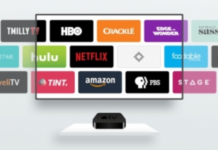Gurugram– With mobile and Internet penetration on the rise in India, Facebook India is set to prepare companies — beginning with the smartphone industry — hit the right chord with consumers and eliminate the massive revenue loss owing to “friction”, a top company executive stressed here on Wednesday.
The social media giant said it will help smartphone manufacturers reduce the consumer drop-off from their purchase journey (referred to as “friction”), thereby creating $3.1 billion worth of potential revenue for smartphone brands by 2022.
“Facebook will work as a catalyst in terms of making companies aware that there is this huge opportunity and will build solutions for them to achieve that. Teams from Facebook will help companies and manufacturers design targeted approach depending on what products they have,” Sandeep Bhushan, Director, Facebook India and South Asia, told IANS.
India is currently the second largest smartphone market globally and is expected to hit 1.4 billion unique mobile subscribers by 2022.
“We will also work with our partners to bring in more capabilities. Consumers are ready, waiting to purchase more via smartphones. The onus is now on companies to understand this quickly and eliminate consumer dropouts on their path to purchase,” Bhushan added.
To help marketeers understand why consumers abandon purchase journeys, Facebook announced a “Zero Friction Future” programme with several industry research reports put together by the global research firm KPMG. The report is based on primary research and insights survey conducted by Nielsen.
Overall friction accounts for 66 per cent of consumer dropouts, while 34 per cent of consumer dropouts are attributed to media friction, leading to a loss of nearly $22 billion in revenues, the study said.
“With the launch of ‘Zero Friction Future’ programme, we want to help businesses adopt relevant mobile marketing strategies to offer seamless purchase experiences, to help them win consumers and increasing sales,” said Bhushan.
The report, titled ‘Eliminating Friction in Smartphone Path to Purchase’, highlighted that friction accounts for approximately two-thirds of consumer dropouts while buying smartphones and media friction contributes to approximately one third of the dropouts.
Currently, mobile influences 58 per cent of smartphone purchase decisions, amounting to $8.5 billion worth of sales and it is expected to grow 1.8 times to reach 73 per cent and influence $15.6 billion worth of sales by 2022.
Facebook influences 33 per cent of purchase decisions amounting to $4.8 billion worth of sales and it is expected to grow two times to reach 44 per cent and influence $9.5 billion worth of sales by 2022.
“When it comes to the 300 million-plus Indian smartphone market, we are right there for both Android or iOS devices. For low-end phones, we are there with Facebook Lite. Reliance Jio has KaiOS operating system and we are integrated for that too.
“We are building solutions for over 2.2 billion Facebook users globally, 1.5 billion users on WhatsApp and 217 million Indian users on Facebook. Whether the consumer is young or old, our platform is there to help them make right purchase decisions,” Bhushan told IANS.
The Facebook-KPMG study also noted that mobile influence will continue to dominate the smartphone purchase journeys as 7 in 10 smartphone purchases will be mobile influenced by 2022.
According to the findings, women seek more explicit communication, while men demand more relevant information.
“People age 35 and beyond are more likely to abandon purchase, as sensitivity to friction increases with age,” the report noted. (IANS)






